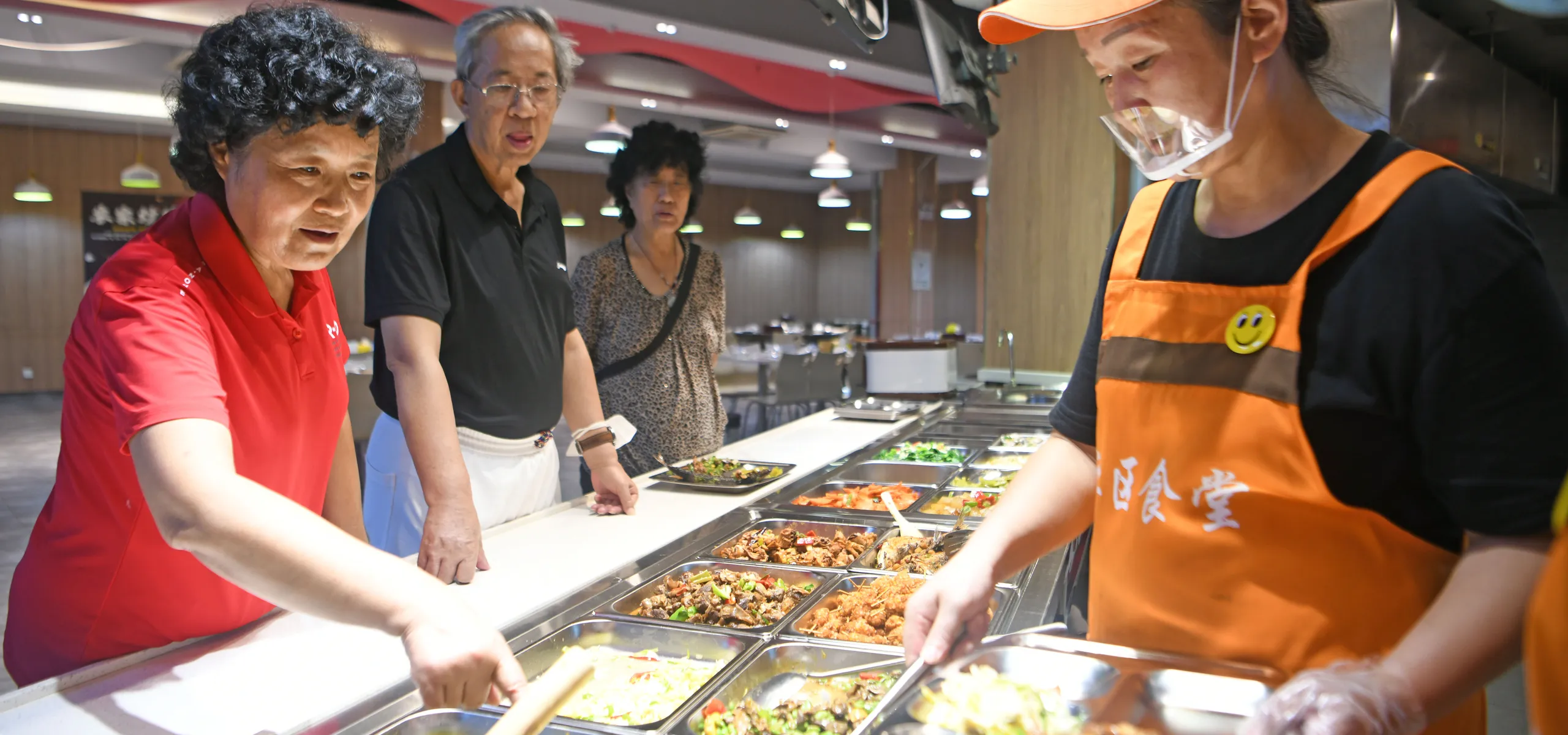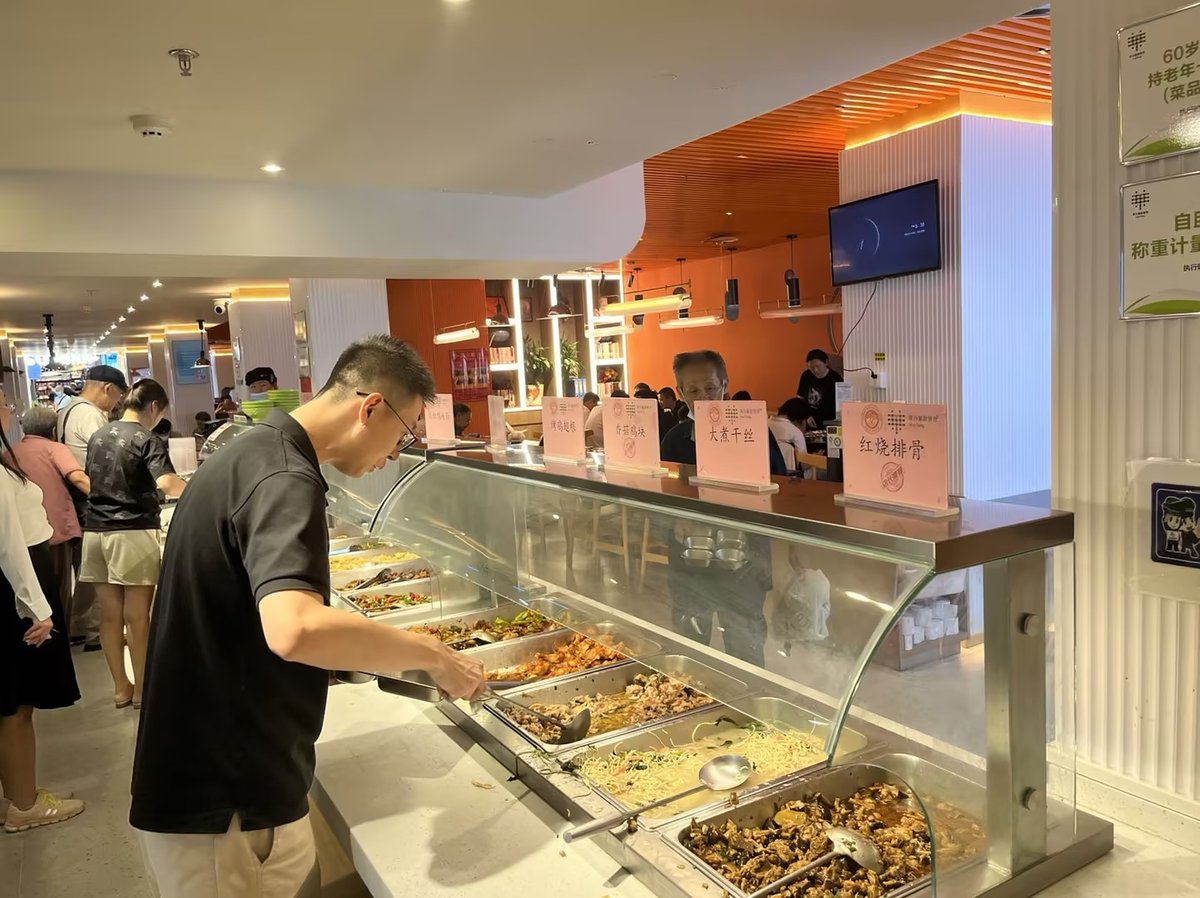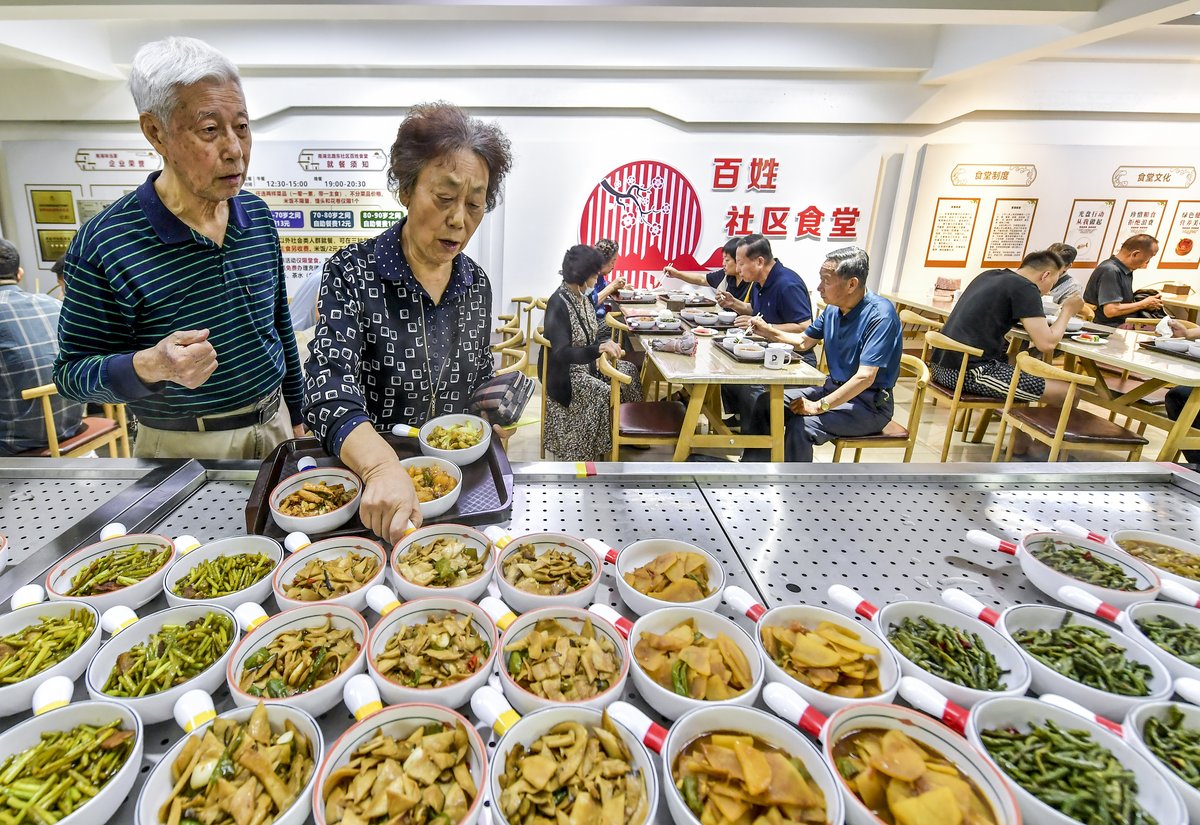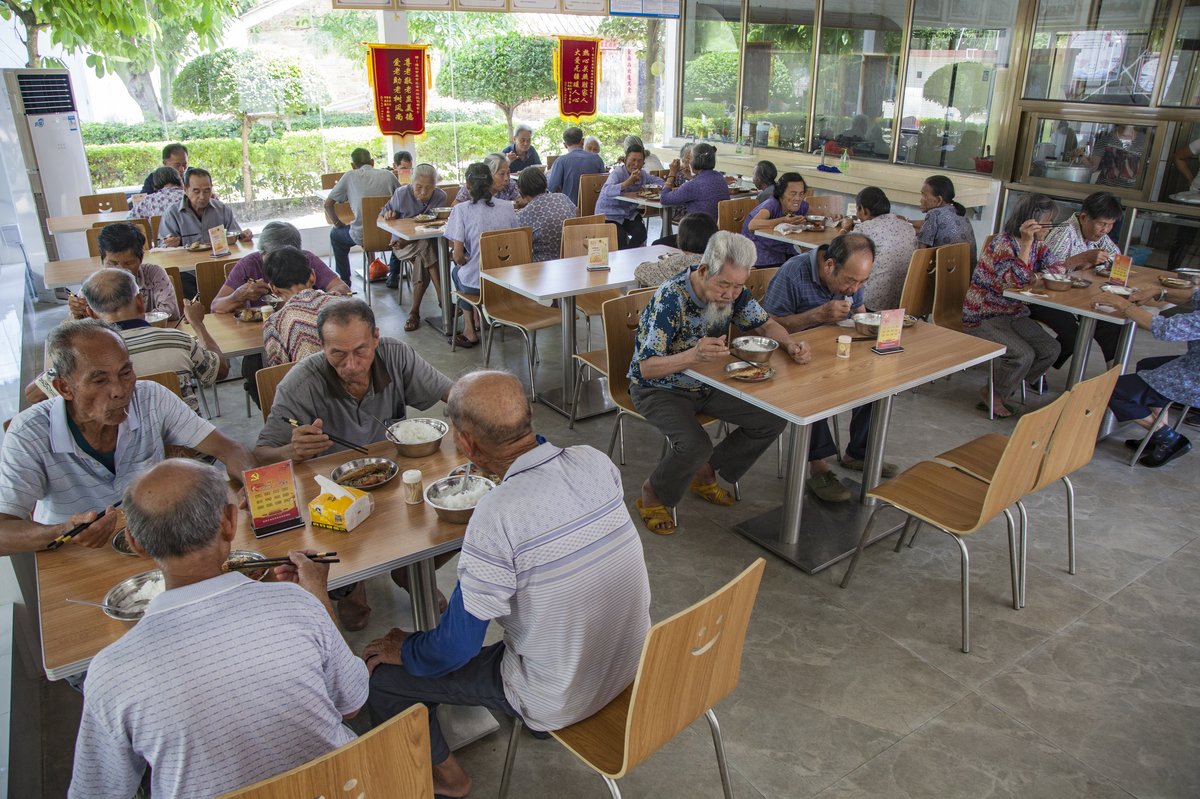Young Chinese turn to government-funded canteens for the elderly amid food safety scandals and the rising cost of meals
For months, Li Fafa has been seeing elderly people entering an alleyway near her workplace every day at noon, and leaving with full boxes of takeout. One day this July, the 28-year-old couldn’t resist following their lead.
Now, Li, who works in a study abroad agency, joins these seniors for lunch every day in the Dongdaqiao Community Canteen, which she describes as a “hidden gem.” Also eating alongside them are other people from all walks of life in this neighborhood in Beijing’s Chaoyang district, who, like Li, are pressed for time to cook or fed up with greasy takeaway options. They are increasingly turning to government-run canteens for the elderly for affordable and healthy meals—with some also discovering, to their delight, a closer connection with their community.
Li was impressed by the cheap yet nutritious food options in the canteen. A meal there costs her only around 15 yuan, whereas she used to spend an average of 30 yuan ordering takeout for lunch. “It’s cheaper than eating out and the menu changes every day,” she tells TWOC. “Through the cafeteria window, I can see the cook preparing dishes so I felt quite reassured [about food safety].”
Community canteens (社区食堂 in Chinese) were built in the last decade for the convenience of the elderly, a rapidly expanding population that faces issues with caring for themselves and maintaining social connections as their physical health declines and their children move away from home. Usually operated by third-party companies, but subsidized by local governments, they offer discounted meals to seniors over the age of 60.
To meet growing demand, canteen numbers have boomed across the country, but they are still in short supply. According to local media outlet Anhui News, there are a total of 4,892 elderly-exclusive canteens in Anhui province alone, serving more than 4 million meals to seniors. Meanwhile, a survey by the local Party committee of more than 2,000 residents in Jinsong North Community in Chaoyang district, Beijing, revealed that establishing community canteens and providing convenient food were ranked as the third most crucial issue facing the community, where 40 percent of residents are people aged 60 or above who take care of their grandchildren or are incapable of cooking for themselves. Another 37 percent are young people who also lack time to make their own meals.
Moved by the challenges faced by elderly people in accessing meals during the pandemic, entrepreneur Zhang Kunlun established eight community cafeterias in Zhuozhou, Hebei province, starting last September, without any financial backing from the government. To increase efficiency and minimize costs, the food is cooked in a central kitchen and distributed to each cafeteria.
Like many community cafeterias, though, Zhang struggles to make a profit. A set lunch at the canteen is priced from 2 to 10 yuan for seniors who live on government subsidies and is adjusted depending on their age. Though he can see more than 200 customers per day per canteen—including seniors, young office workers, and families—Zhang’s company still faces a monthly loss of approximately 30,000 yuan. “Some of the seniors are picky about everything you make, and lots of them think we should offer it to them for free,” he complains.
To offset the losses, the company offers catering services to nearby factories. “If we weren’t running a community cafeteria, but a fast food restaurant instead, we could adjust our price when the cost of ingredients rises,” Zhang tells TWOC. But since they are seen as providing services to the community, “We can’t increase our price, or residents would blame us,” Zhang says.
To earn the trust of elders, Zhang Yu (no relation to Zhang Kunlun), who manages a community canteen in northern China’s Inner Mongolia region, invites first-time customers to dine for free. Despite receiving a rental exemption from the local government, Zhang Yu, who is in her 20s, also finds it tricky to make a profit from the welfare-driven canteens.
According to Zhang Yu, her canteen can only earn about 5,000 yuan per month, after the deduction of employee wages and ingredients costs, mainly because of a lack of customers. “Since young people have started eating here, our revenue has been slightly higher. Youngsters are willing to spend about 30 yuan to eat [a more expensive set meal] while seniors usually opt for a single dish,” she tells TWOC.
To attract a more diverse set of customers, Zhang Yu even changed the restaurant’s name from “Senior Happiness Cafeteria” to “Community Happiness Cafeteria” and started advertising on social media platforms like Douyin, China’s version of TikTok. “We’ve started live streaming every day about our canteen just to make more people aware of us,” Zhang says.
These problems are exacerbated in rural places, where the smaller customer base has less money to spend on eating out. Wang Zhuo, the former owner of a community canteen in a rural county in central China’s Henan province, saw her fair share of seniors who would order the cheapest items on the menu regardless of their nutritional value. “We can’t sell food at a high price, and we have to give discounts to the elderly. We can’t make enough money to cover our essential costs, like water and electricity bills, rent, equipment, staff salaries, and renovation costs. We’re just running a charity without any financial support from our community,” says Wang, who asked to go by a pseudonym. She shut down her canteen after about six months of operation this July.
Ever-present scandals have led to public outcries about food safety and nutrition in China, with community canteens both benefiting and suffering from the fallout. In June, a student’s report of finding a rat’s head in his canteen meal at a technical college in Jiangxi province was strenuously denied by local authorities. They insisted that the object was a duck’s neck until the provincial government confirmed the student’s allegations and vowed to punish those responsible. In September, parents and students also staged protests on several campuses across China against prepackaged foods offered in school canteens.
Community canteens try to reassure consumers with government registration, inspections by the local hygiene department, and livestreams from the kitchen so that diners can see the cooking process. Ironically, their affordability makes some customers question the safety of their meals. In February, state-run media outlet China Comment found that residents of several communities in Beijing and Hebei province were worried that canteens would use ingredients that are close to expiration or use unsafe preparation methods to cut costs. In September, a senior in the city of Tianjin told Legal Daily newspaper that he stopped going to his community canteen because he saw the staff smoking in the dining room, and he “wasn’t surprised” that it closed down a year later.
Others question how healthy the food really is. In a community canteen in Beijing’s Xicheng district, which TWOC visited in September, a 64-year-old retired teacher surnamed Zang said he started eating here daily with his wife early this year because they lack cooking skills and feel that the takeout meals their son used to order for them are too oily and spicy. But other seniors told TWOC that they wished the canteen could serve more vegetable dishes and less spicy food.
Each night after finishing his dinner, Zang usually rises to check the menu for the next day. “Sometimes we just come here to eat and chat with our neighbors. When we have friends or relatives over, we’ll bring some food from the canteen back home to treat them,” he says.
Zhang Kunlun, the canteen owner in Hebei, also notes that his elderly customers use the dining room as a social space. In the afternoon, he says, instead of going home for their customary nap, his senior customers often play chess or cards, enjoying their air-conditioning in summer or central heating in winter until the kitchen opens for dinner in the evening.
However, he still worries about staying afloat. “I know many people believe opening many community cafeterias is a pretty good [business model], but only I know what I’ve been through this year,” he says.
He plans to open a total of 16 cafeterias, so he can make ends meet. “I hope I can keep going, but I don’t know how long I can persist.”
















